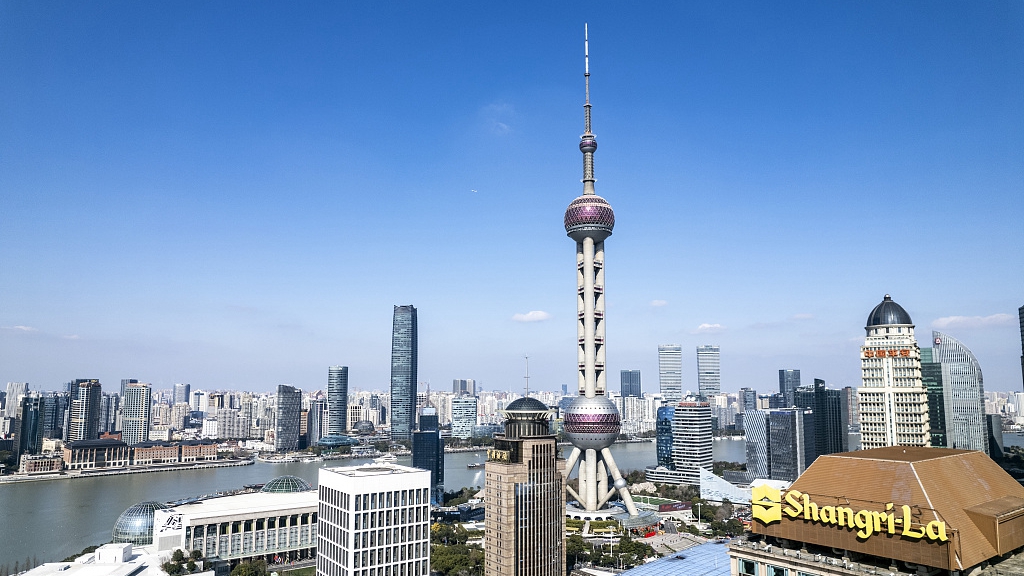
The Shanghai Oriental Pearl Tower in east China's Shanghai, February 10, 2022. /CFP
The Shanghai Oriental Pearl Tower in east China's Shanghai, February 10, 2022. /CFP
Editor's note: The Two Sessions, a major event on the Chinese political calendar, is scheduled to take place in the next few days. We've invited experts from various fields to write articles about hot issues that help us better understand today's China. This is the first piece of our "China's Road to Development" series. Pola Grijalva is the CEO of the World Trade and Investment Group and president of the China Chamber of Commerce and Technology Mexico. The article reflects the author's opinions and not necessarily those of CGTN.
The news of China achieving 8.1 percent GDP growth has captured the attention of many analysts in Latin America. How could China reach such figures when we have a country like Mexico, being the largest economy in the region, which in 2020 had a GDP drop of 8.1 percent and for 2021 an expansion of 5 percent?
What may distinguish China from many other countries in the world is its capacity to react and adapt to unexpected conditions and even to sail through uncertainty thanks to a clear vision of its objectives and the national coordinated efforts focused on achieving these goals.
In the complex yet agitated international environment, will China play a significant role in the post-pandemic recovery and economic development for 2022?
Since 2010, China has consolidated as the world's second largest economy. In the last 42 years, China has increasingly played a role in the global economy with an average growth rate of 9.2 percent between 1989 and 2021; more than three decades of sustained expansion.
According to the International Monetary Fund, China will account for 27.7 percent of the global GDP growth in 2025, whilst the U.S. will contribute only 10 percent. This means that almost a third of the total economic growth has its expectations on China, which demonstrates why China will become the world's largest economy by 2028.
Besides all the aforementioned indicators, perhaps the most relevant one is that China has become one of the main exporters of capital. Their investments in every region on the planet have grown exponentially. As China moves up the value chain, more and more Chinese companies will choose to acquire or partner with foreign tech brands and market networks. This shows that China will increasingly play a decisive role in outbound investment flows globally.
According to the United Nations Conference on Trade and Development, China was already listed as the leading investor country in the world in 2020. It is the main creditor of U.S. debt, and made massive purchases of European debt. With this in mind, we can say that China has had and will have an unprecedented impact on the financial, commercial and technological scenarios.

Zhoushan Port in Ningbo, east China's Zhejiang Province, March 3, 2021. /CFP
Zhoushan Port in Ningbo, east China's Zhejiang Province, March 3, 2021. /CFP
The country's sustained public and private investment in research and development, is creating a solid platform to base a tech-driven economy; the massification of the use of these advancements could eclipse that of the U.S. in less than two decades.
For example, China, as of today, leads the way in the deployment of 5G technology. The remarkable advances in artificial intelligence in the management and application of big data can give rise to the boost of the internal market. According to the World Intellectual Property Organization, China is the leader in the registration of patents since 2019, with a focus on IT and Telecom.
Maybe it's time to make a thorough assessment of the link that the developing countries could build with this engine of growth. In particular for countries like Mexico, having such an extensive cooperation and multiple layers of community building with the Unites States, we are truly interested in the diversification of our foreign trade. Currently, we are their second trading partner and more than 85 percent of our total exports cross our common border every day.
We believe on exploring new avenues. In particular we are working to boost technology transfer and the promotion of tech-based startups to reach the very attractive Chinese ecosystem.
Actually, with the cooperation of Hong Kong Trade Development Council, the China Chamber of Commerce in Mexico, the OTT network, the National University of Mexico and the Tech of Monterrey, we are promoting an induction course to help the companies understand and reach the Chinese capital markets and even use the actual innovation hubs to connect with potential investors, developers and industrial partners in China, with the aim of building close cooperation and interchange to penetrate global markets.
(If you want to contribute and have specific expertise, please contact us at opinions@cgtn.com.)

